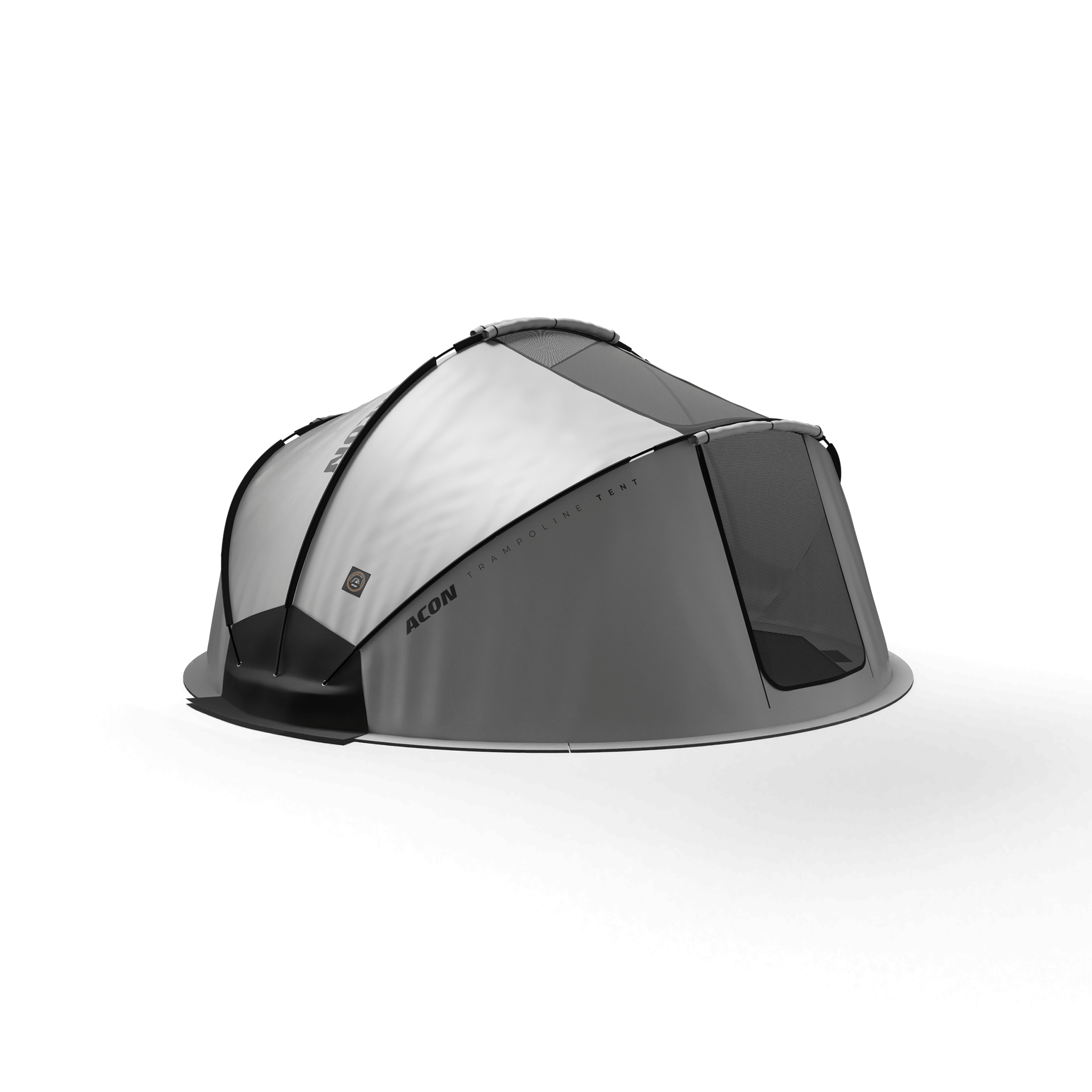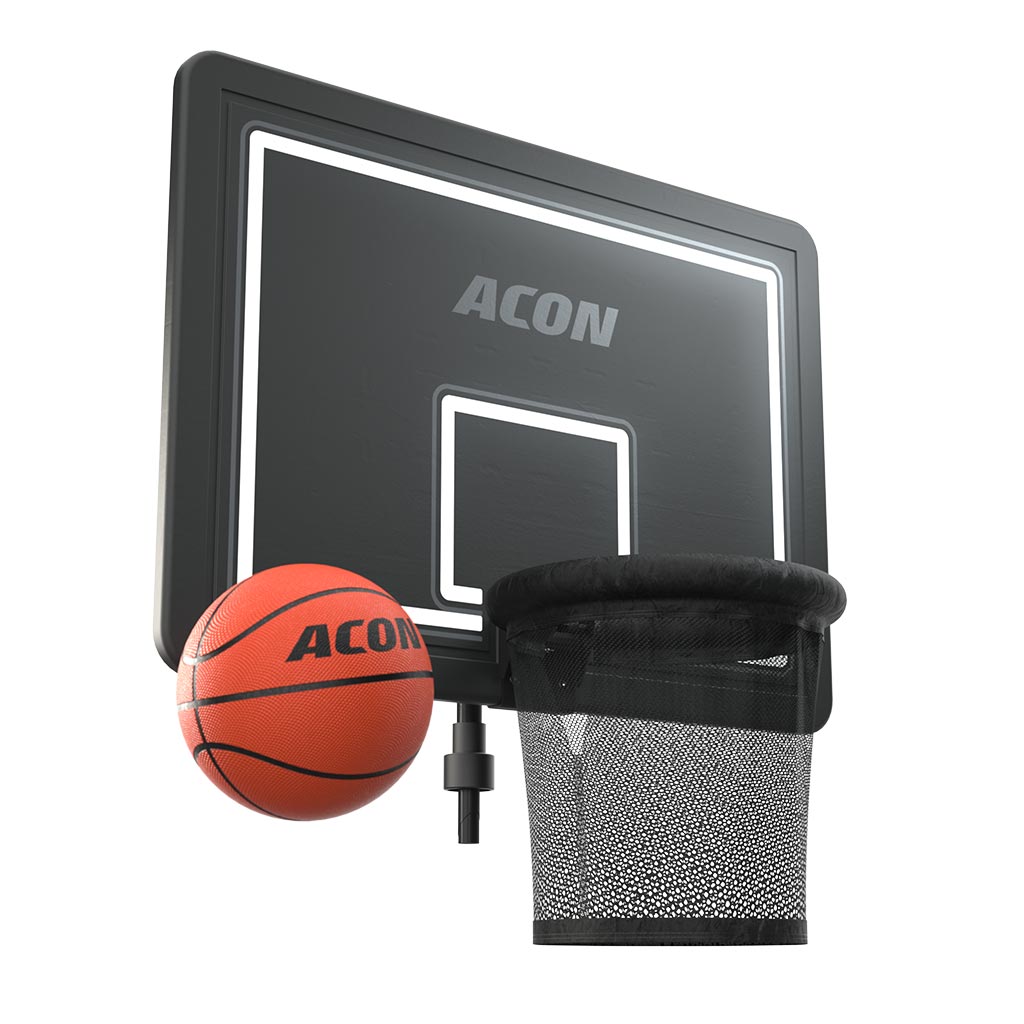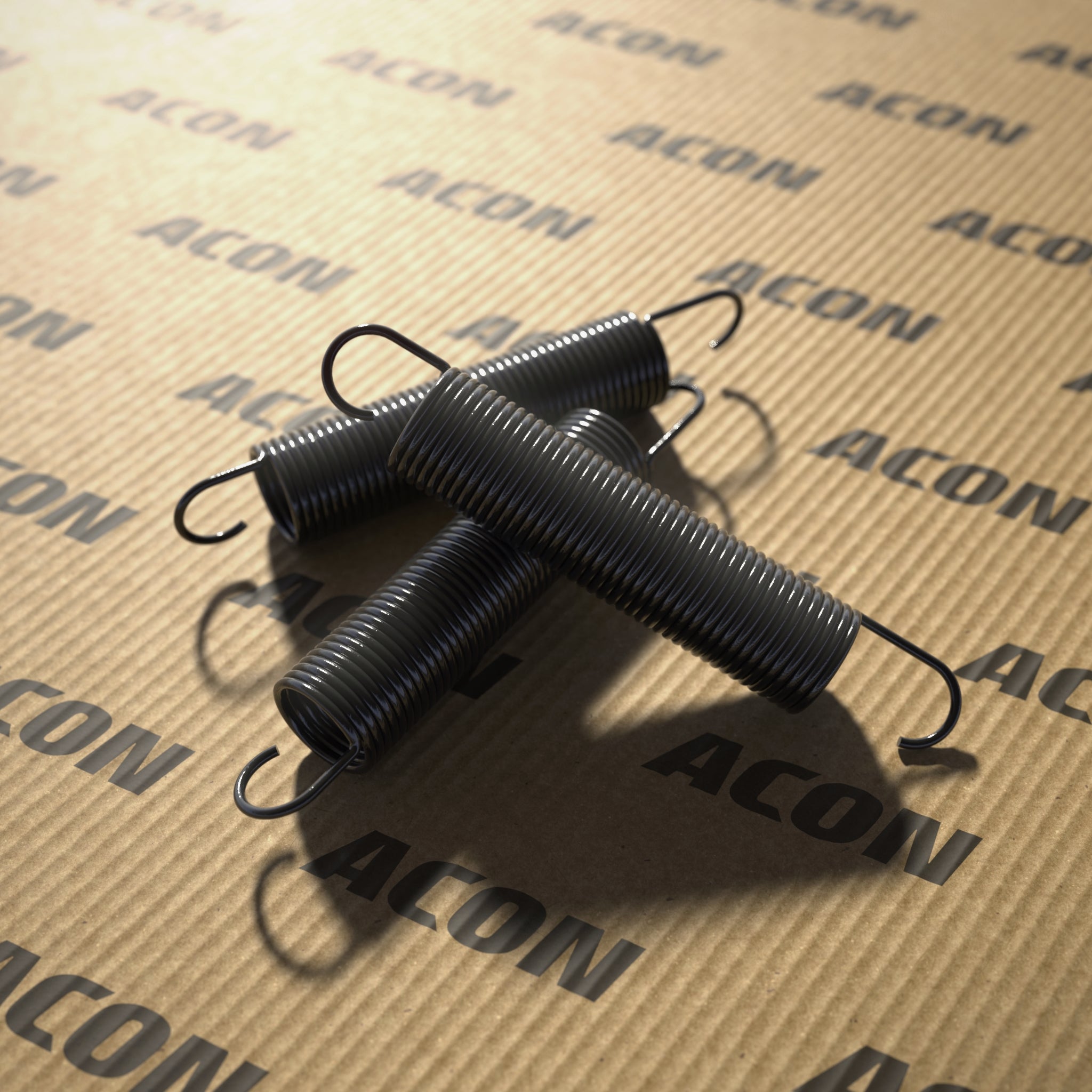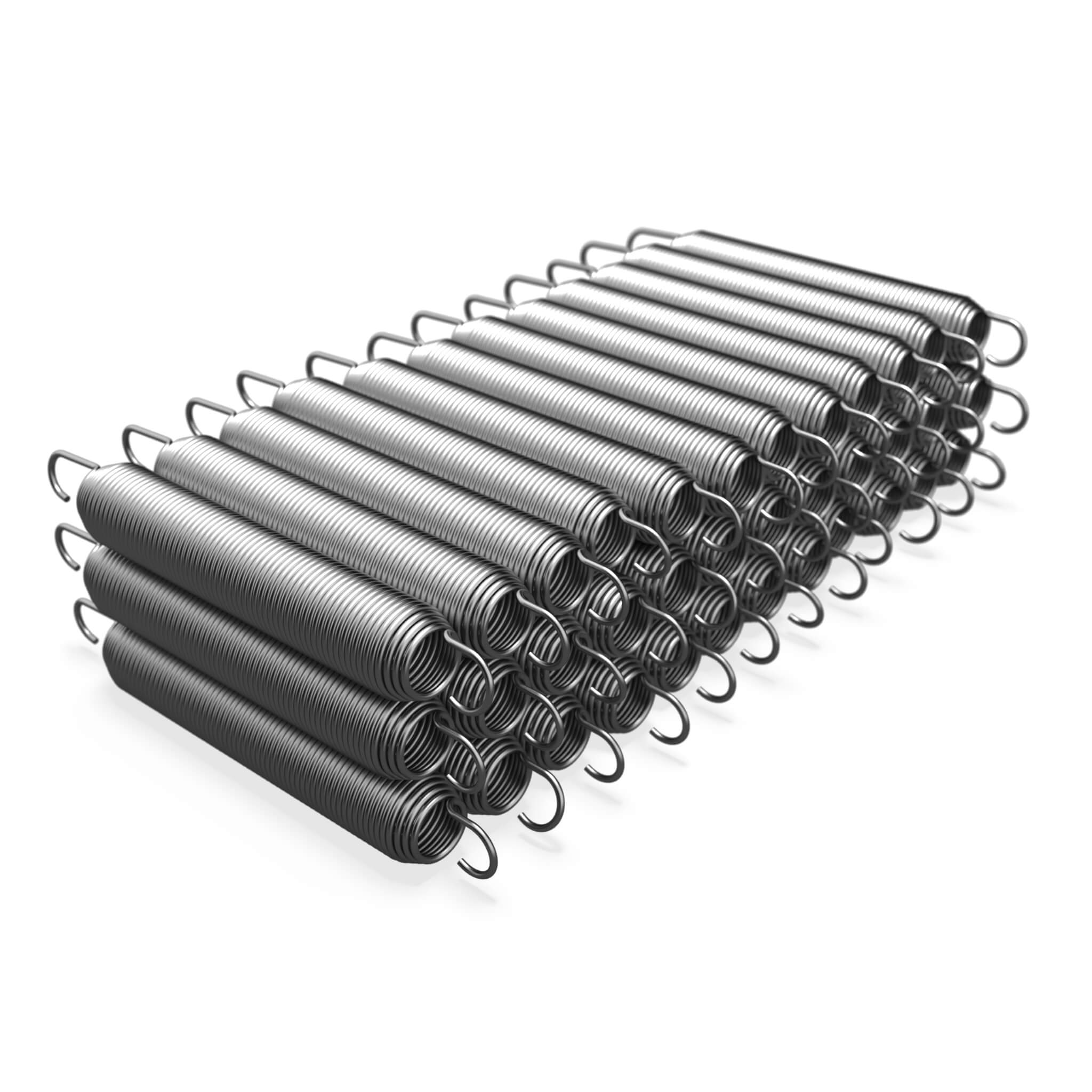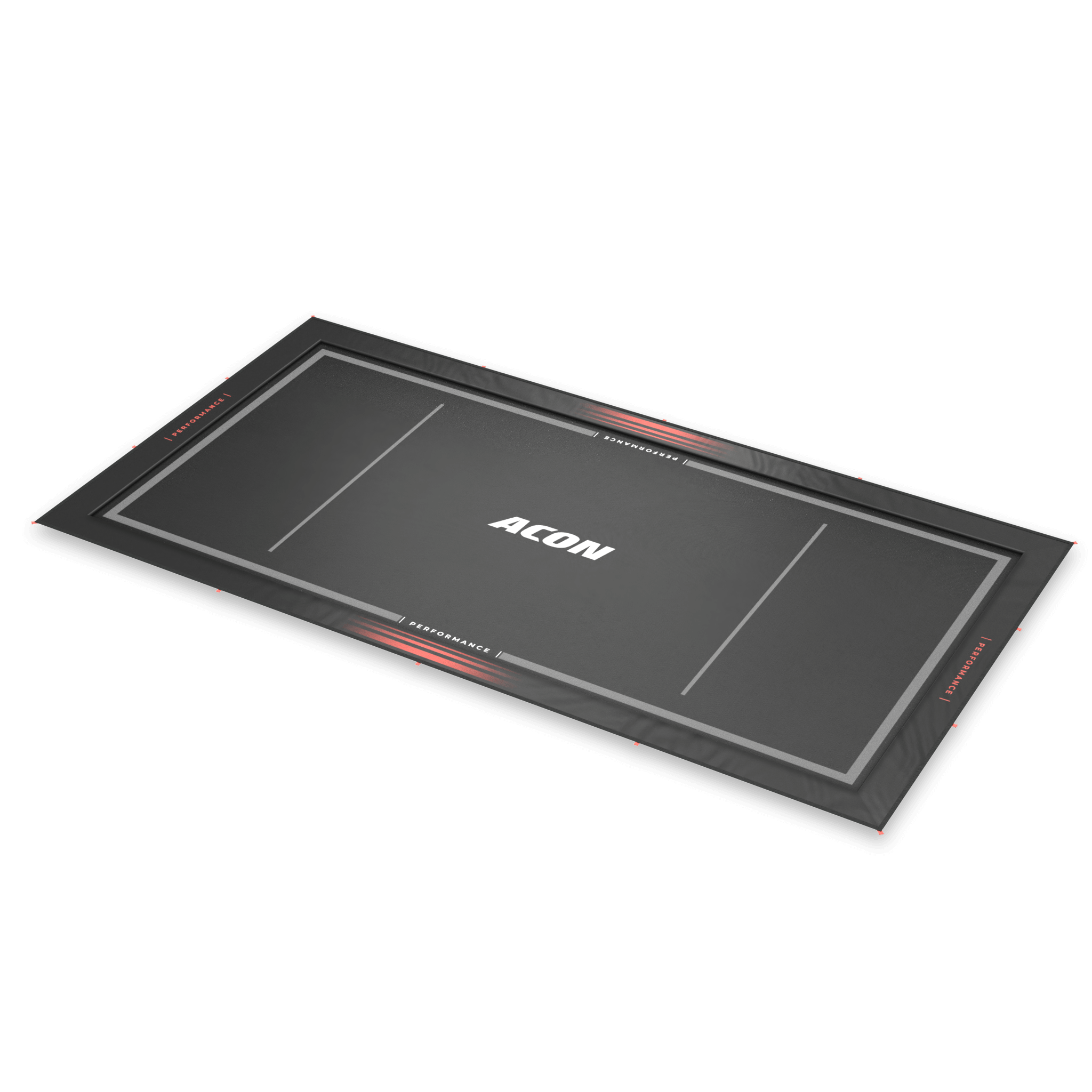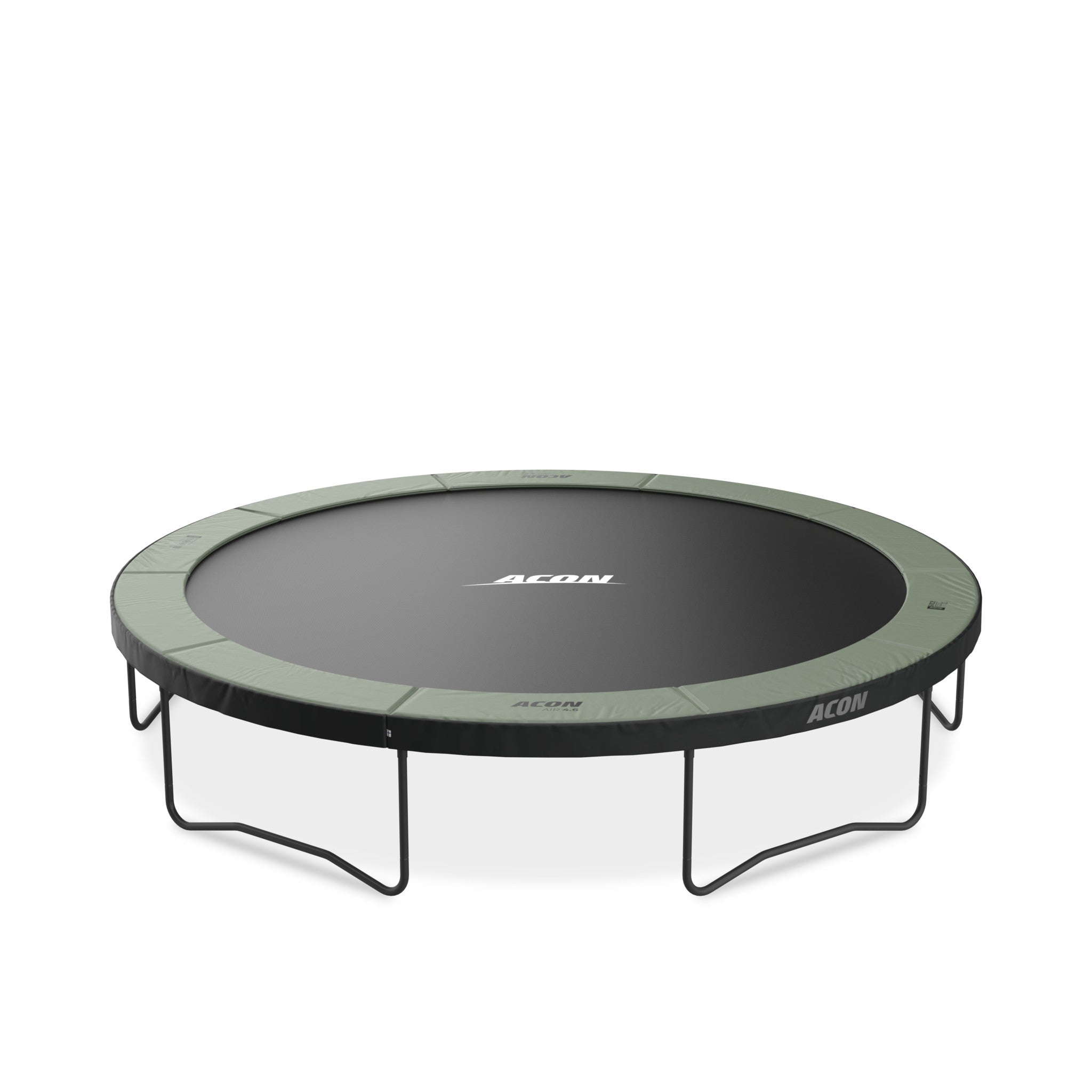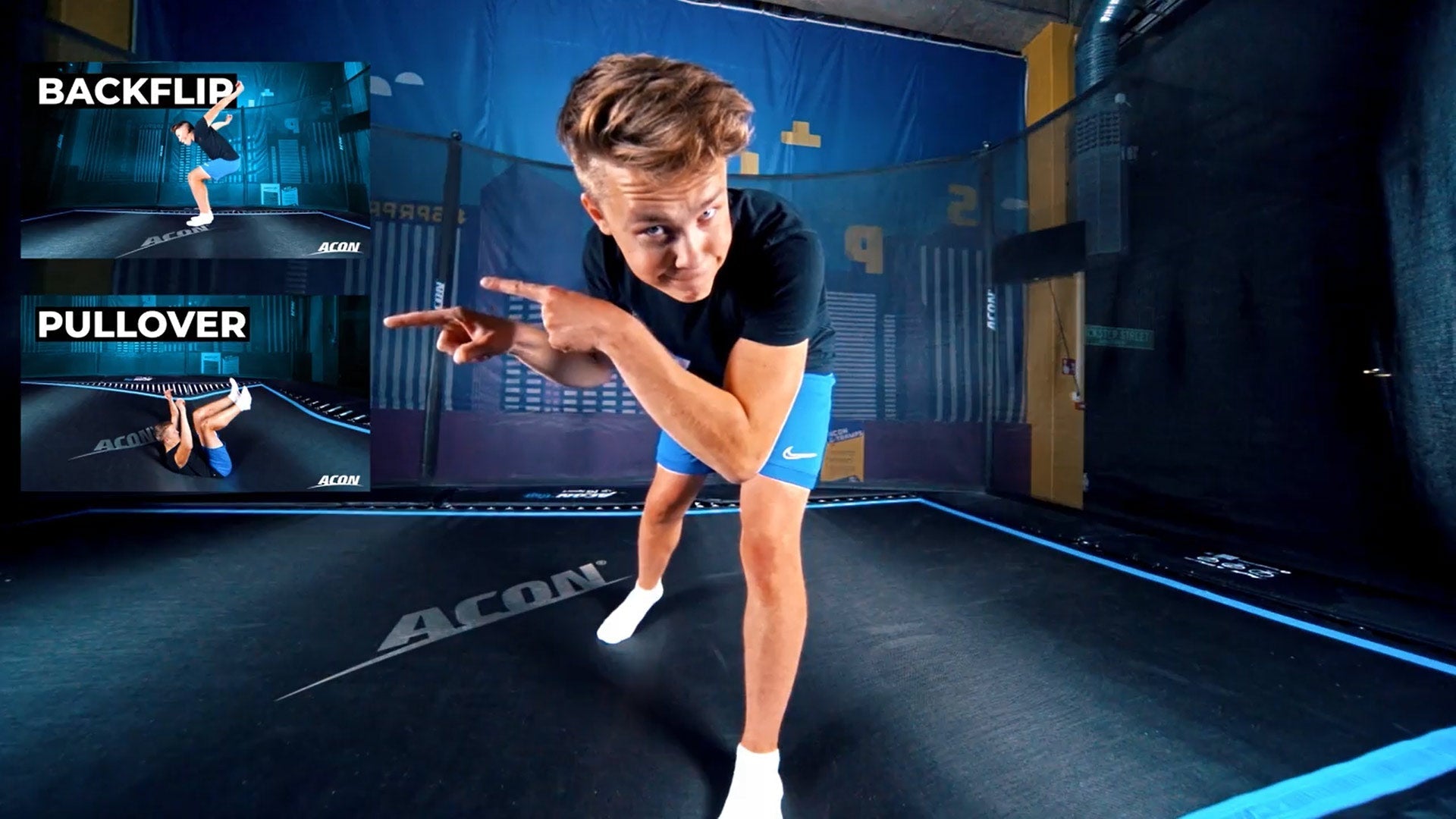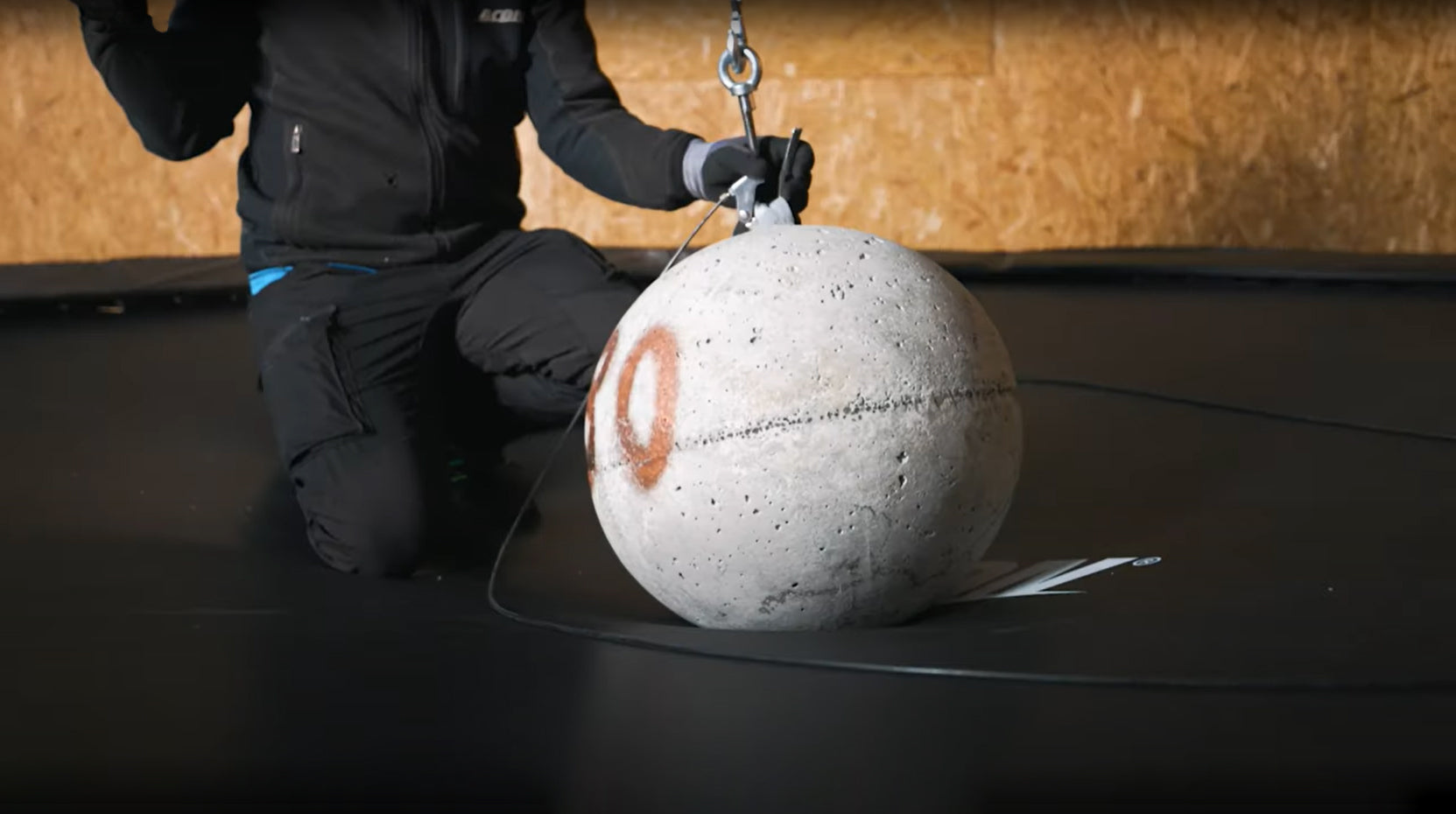Distributacon Inc.
1250 Wayzata Blvd E Unit 1127,
Wayzata, MN 55391, USA
Spending time researching trampolines can be a confusing process. There are so many variations between brands and the types of trampolines available, it can be like entering a new world: one teeming with its own terminology. It’s natural to want to make the best, safest choice for your kids when choosing the trampoline for your backyard.
Without being a trampoline connoisseur, these differences can be confusing to consider. Here, we take a look at what a springless trampoline is, and why its proponents claim it’s superior. While springless trampolines are frequently marketed as a “safe” alternative to trampolines that come with springs, this is not necessarily the case.
Premium quality springs like Acon’s are made from galvanized steel and therefore are rust-proof, offering durability without compromising on bounce or safety. What’s more, our trampolines come with thick padding to cover the springs, as well as flexible nets to create a safety enclosure.
Ultimately, the decision about which trampoline best suits your needs will depend on your own requirements. To help you decide whether a trampoline with springs or a springless trampoline is best, we take a closer look at both.
What is a Springless Trampoline?
A springless trampoline can be recognized easily, as it looks quite different to regular trampolines. On a springless trampoline model, you will see diagonal, raised composite rods (or similar) that connect the frame to the jumping mat. This differs from a regular trampoline the springs connect the frame to the mat horizontally. The springs are replaced with rods on a springless trampoline, commonly made from fiberglass, bungee cords, elastic straps or leaf springs. The frame of the trampoline is outside the safety enclosure on a springless trampoline. There are a number of trampoline manufacturers who offer springless trampolines on the market.
Spring vs Springless Trampolines and Bounce
Springless trampolines can be difficult to assemble. Depending on the model purchased, inserting the rods correctly can be tricky and require a lot of strength. However, if the manufacturer has provided solid instructions, assembling one shouldn’t be too difficult.
The main difference between regular and springless trampolines is the bounce. More force is needed to bounce on a springless trampoline. A springless trampoline gives a firmer kind of bounce, better suited to fitness rather than for family fun or practicing jumps or tricks. This type of stiff bounce rarely satisfies the need for bounce and thus, the trampoline may be left unused. In contrast, a high-quality spring trampoline has a soft bounce that is not only lighter but also safer. Why?
A high-quality spring trampoline offers a gentler bounce compared to springless trampolines. When it comes to the spring trampolines, the impact on the body when landing is not as abrupt and intense as it is on springless models. Springless trampolines, on the other hand, can exert more pressure on the ankles, knees, and hips. This means that an unsuccessful landing can feel excessively harsh in comparison to a spring trampoline. Thus, when you jump thousands, or even millions of jumps throughout your lifetime, a stiff landing becomes a strain on the joints in the long run.

In other words, spring trampolines are bouncier than their springless counterpart. In comparison, a trampoline with springs will propel you higher into the air as you bounce. Sturdy and flexible, coiled steel springs stretch as you jump, then hold energy between jumps - to help to send you soaring even higher on your return! This makes spring trampolines perfect for not only basic jumps but also for advanced jumping, like practicing gymnastics and stunts like somersaults and backflips, and it’s why you can always find them at gymnastics competitions.
In case you are not familiar with trampolines, it can be challenging to compare spring trampolines and springless trampolines. This task is nearly impossible unless you know someone who owns both types of trampolines. To get an idea of the difference, however, you can find and watch videos that demonstrate how springless and traditional trampolines bounce. Comparing these videos, you'll notice that jumping off a springless trampoline requires effort. In contrast, trampolines with springs almost do the job for you.
About Trampoline Safety on Springless vs Spring Trampolines
Springless trampolines claim to be safer than trampolines made using springs. This safety is their key selling point, and why they’re often more expensive. Manufacturers say they’re safer than regular trampolines because by removing the springs from the equation, the jumper cannot hit the springs unintentionally by landing on them or injure limbs/fingers by placing them between the springs.
However, the idea that jumping on a trampoline is completely safe, due to a trampoline being springless, is simply not true. There are precautions that always need to be taken when it comes to jumping on a trampoline, no matter whether the trampoline has springs or not.
Safe trampolining consists of a combination of three main elements: predictability, usage and features. These three aspects are introduced next.
Predictability
Predictability is all about quality assurance. Look to safety certifications, the type/durability of materials used to make the trampoline, and the extent that the trampoline has been safety tested to discover the quality by extension, the safety standard of your new trampoline.
Usage
How you use your trampoline is a big factor in the level of safety when you use it. By following the safety instructions and using your common sense, you can have fun and stay protected when you bounce. Also, when practicing tricks, it's important to progress gradually and avoid attempting overly challenging maneuvers too early, following step-by-step progressive instructions in our article on 'how to do a backflip.'
Installing your trampoline on a flat surface, making sure there’s enough space and that everything works correctly, as well as limiting the number of jumpers at a time and building your trampoline skills slowly will contribute to a safe trampolining experience.
Features
Safety features such as net enclosures, padded poles, well-maintained parts and tight netting that doesn’t allow fingers to pass through are factors to look out for when choosing a safe trampoline. A spare part, multi-year warranty that allows you to swap out any aging materials if your trampoline needs sprucing up, and UV treated material to prevent damage from the sun taking effect on the safety netting, are also things to be on the look-out for.
And, if you are still not comfortable by the idea of having a spring trampoline, please note that many premium spring trampolines, like Acon’s, come with various types of enclosures; in some enclosures, the net is aligned with the mat, leaving the (softly padded) springs outside the jumping zone, giving you that extra piece of mind, while on others, the net is outside the softly padded springs and the spring pads. Whichever option you choose, know that both are safe for your family.
You can read more about trampoline safety on our blog here.
Bounce vs Safety – ACON's stance
Trampoline safety standards are far ahead of years ago due to a vast amount of research and development that’s been committed to making trampolines that are safe, fun and fit for their purpose for the longest time possible. Acon performs rigorous safety testing on all our trampolines, to guarantee their safety standards. By using paddings that come with our trampolines, having a safe jumping zone and teaching kids how to jump properly to avoid injury, jumping is extremely safe on spring based trampolines. Our springs are durable, made from galvanized steel material, that won’t rust.
Suitable for everyone, Acon’s trampolines are built with gymnasts and g-trampers in mind, yet anyone who simply wants to have a good bounce is sure to enjoy our bounce. We want to make sure that everyone, including adults and total beginners, have the possibility to enjoy a good bounce and joyful jumping experience on our trampoline. This is also why we have one of the highest weight limits on the market.
We’re committed to being the bounciest: our tests have even helped to prove this! For us, the best trampolines are those that combine premium quality, long-lasting materials; that have uncompromising safety standards in development; and that offer the biggest bounce. Through extensive research we’ve found that spring trampolines tick all of these boxes, so it's for these reasons that we don’t make, or intend to make, springless trampolines.
Summary
So there you have it: what a springless trampoline is and how it compares to a spring version. Whichever version you choose, your family trampoline will provide hours of fun and exercise. While jumping on a trampoline comes with its own risks, thosearen’t limited to the presence or absence of springs. Always practice trampoline safety and you’ll have an exciting and safe, pro jumping experience!
Frequently asked questions
What is better – spring or springless trampolines?
Both types of trampolines have their own advantages. A good spring trampoline, such as ACON, delivers a bounce that keeps kids coming back, ensuring it is never unused for a long time. If you’re looking for a combination of the best bounce and a safe trampoline, spring trampolines are better.
How does the bounce of springless trampolines compare to spring-based ones?
The bounce you will experience on a springless trampoline is different to a spring-based one. A springless trampoline has a firmer jumping mat that allows less bounce. The less weight exerted, the lighter the bounce will be. To jumpJumping on a springless trampoline requires more force. A spring-based trampoline is more flexible and holds the energy as you bounce so you jump even higher on your return, making it a great choice for tricking and leaping as high as possible. By getting an ACON, everyone, including adults can experience an amazing bounce and defy gravity.
Which one is more expensive – spring or springless trampoline?
Springless trampolines tend to be more expensive, as they claim to have better safety benefits. However, quality spring trampolines are made to the highest safety standards and are just as safe when the elements of predictability, usage and features are considered and used. The use of springs is not the determining factor in trampoline safety.


